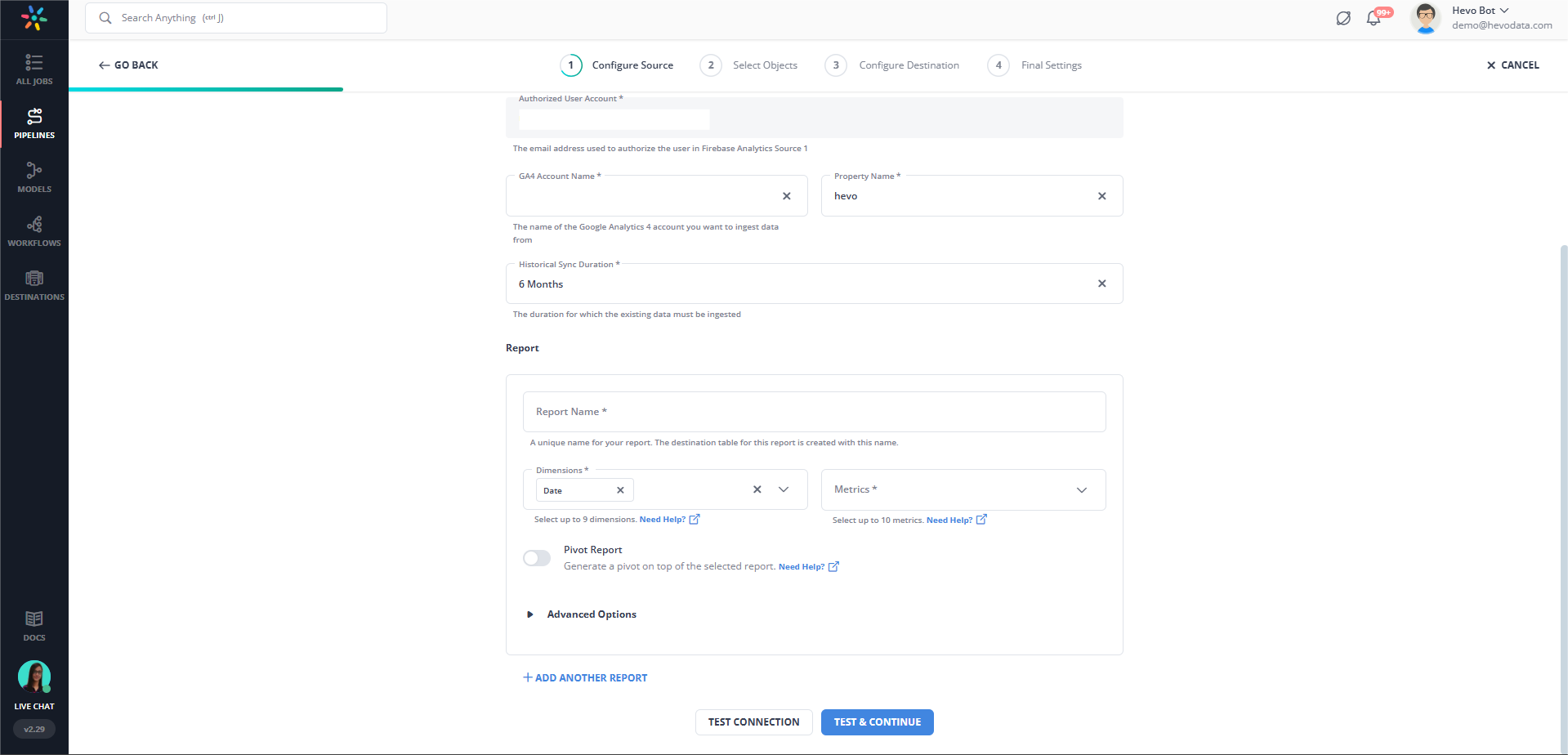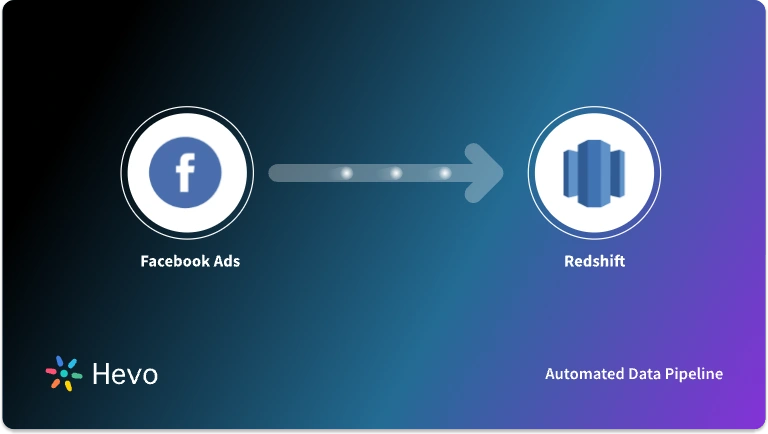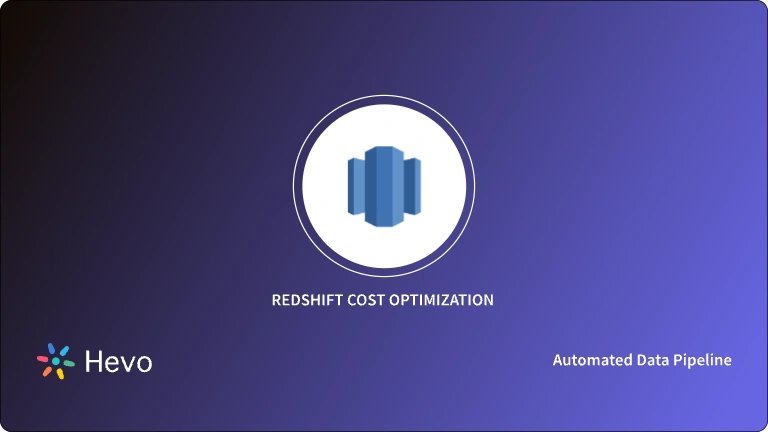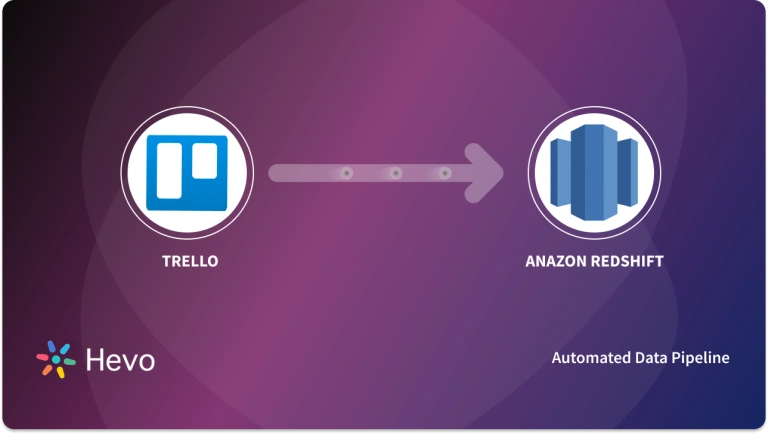Easily move your data from Firebase Analytics To Redshift to enhance your analytics capabilities. With Hevo’s intuitive pipeline setup, data flows in real-time—check out our 1-minute demo below to see the seamless integration in action!
Firebase is a cross-platform SDK that lets you create and maintain your mobile applications. It offers services like analytics, authentication, and more so that developers don’t have to build everything from scratch.
However, you can transfer the information into a centralized repository to better use Firebase data for analytics, bug tracking, and backup. If you require to harness the power of data through insights and predictions, you shall connect Firebase Analytics to Redshift, a data warehouse service of Amazon Web Services.
In this article, you will learn about Firebase Analytics to Redshift integration.
Table of Contents
What is Firebase Analytics?

Firebase is a cloud-hosted NoSQL database that stores data in JSON format and synchronizes it in real-time to all connected clients. Firebase includes Firebase Analytics which helps businesses understand how Android and iOS users engage with their applications. It includes metrics like average revenue per user (ARPU), active users, retention resorts, event counts, and more for measuring user engagement.
Key Features of Firebase Analytics
- Event Tracking: Firebase Analytics allows you to track user interactions within your app as events. You can log various types of events, such as button clicks, screen views, and e-commerce transactions.
- User Properties: You can define user properties to segment your audience based on characteristics like demographics, interests, and behavior.
- Audience Segmentation: You can create custom audiences based on user behavior and properties, allowing for targeted messaging and engagement.
- Integration with Google Services: Firebase Analytics integrates seamlessly with other Google services, such as Google Ads and Google Tag Manager, enabling more effective advertising and marketing strategies.
Supercharge your Firebase Analytics by migrating to Amazon Redshift! Gain deeper insights with powerful analytics, scalable storage, and faster querying—turn your raw data into impactful decisions in no time! Ensure seamless data migration using features like:
- Seamless integration with your desired data warehouse, such as BigQuery.
- Transform and map data easily with drag-and-drop features.
- Real-time data migration to leverage AI/ML features of BigQuery.
Still not sure? See how Postman, the world’s leading API platform, used Hevo to save 30-40 hours of developer efforts monthly and found a one-stop solution for all its data integration needs.
Get Started with Hevo for FreeWhat is Amazon Redshift?
Amazon Redshift is a fully managed, petabyte-scale data warehouse service in the cloud, provided by Amazon Web Services (AWS). It allows you to run complex queries and analytics on massive datasets quickly, making it ideal for business intelligence, reporting, and data warehousing.
Key Features of Redshift
- Petabyte-scale data warehouse: Redshift can scale from a few hundred gigabytes to petabytes of data. You can easily resize clusters up or down as your data needs grow or shrink.
- Redshift uses a columnar storage format to store data, drastically reducing the amount of I/O required to execute queries.
- Redshift employs Massively Parallel Processing (MPP) architecture, which distributes data and query execution across multiple nodes.
- Automated backups: Redshift automatically backs up your data to Amazon S3 (Simple Storage Service). You can configure backup retention periods, and it will retain snapshots for up to 35 days by default.


What is the Easiest Way to Connect Firebase Analytics to Redshift?
Using an automated platform like Hevo is the simplest method to migrate your data from firebase analytics to Redshift in just two simple steps.
Step 1: Configure Firebase Analytics as your source

Step 2: Configure Redshift as your destination.
Manually Performing Firebase Analytics to Redshift Integration
Building an in-house data pipeline requires significant experience, time, labor, and mistakes. Data must be extracted using Firebase APIs and then appropriately connected to Amazon Redshift to complete the Firebase Analytics to Redshift integration.
1. Log in to your Firebase account with valid credentials.
2. Go to your project and click on the real-time database module.
3. Now, click on three dots in the top-right corner to open the menu and choose “Export JSON.”
4. Your file will start downloading. Convert the JSON into a CSV using Pandas’ read_json method.
Steps to Import Data to Redshift
1. The first stage is to make a table that better resembles the original data’s duplicate structure.
2. The simple way to upload your Excel or CSV file data to Redshift is first to send your file to the Amazon S3 Bucket. You might need to create a new bucket before uploading the data.
3. After uploading to S3 Bucket, you can use the copy command to copy the data to Redshift.
COPY table_name [ column_list ] FROM data_source CREDENTIALS access_credentials [options] Example:
COPY table_name (col1, col2, col3, col4)
FROM 's3://<your-bucket-name>/load/file_name.csv'
credentials 'aws_access_key_id=<Your-Access-Key-ID>;aws_secret_access_key=<Your-Secret-Access-Key>'
CSV INGOREHEADER 1;4. You can find the Redshift copy command full specifications here.
5. After entering this command, your data is pulled from the Amazon S3 Bucket and loaded in Redshift.
Limitations of Firebase Analytics to Redshift Using API
You can also integrate Firebase with Redshift using APIs provided by both platforms. However, it requires expertise and is time-consuming. As an alternative, you can export data from Firebase Analytics and import data into Redshift manually. While it is a simple process, you won’t be able to get data in real-time or automatically at fixed intervals. To overcome these challenges, you can embrace no-code ETL solution providers like Hevo Data.
Additional Resources on Firebase Analytics to Redshift
Conclusion
- In this article, along with various features of Firebase Analytics and Amazon Redshift, you learn how to connect Firebase Analytics to Redshift.
- Firebase provides unique facilities to design mobile applications which are robust and easy to use. And Redshift gives you a better storage option that helps to analyze stored data.
- Combining the capabilities of both platforms by connecting Firebase Analytics to Redshift can help you make better decisions, thereby helping your business grow.
Sign Up or a 14-day free trial and experience more seamless migrations like firebase analytics to redshift.
FAQ
1. How do I get data from Firebase Analytics?
Export Firebase Analytics data to BigQuery via the Firebase console for detailed analysis using SQL queries.
2. Is Redshift good for Analytics?
Yes, Redshift is optimized for large-scale data analytics with fast query performance.
3. How do I import Firebase Analytics?
Link Firebase to BigQuery to automatically import Firebase Analytics data.



























































































































































